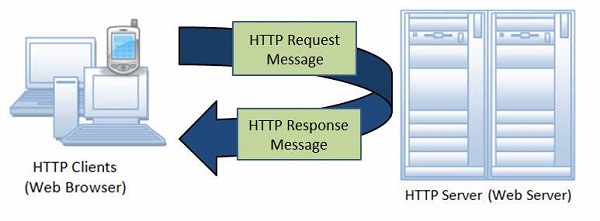
- Security Testing - Home
- Security Testing - Overview
- Security Testing - Process
- Security Testing - Malicious Software
- HTTP Protocol Basics
- HTTPS Protocol Basics
- Encoding and Decoding
- Security Testing - Cryptography
- Security Testing - Same Origin Policy
- Security Testing - Cookies
- Hacking Web Applications
- Security Testing - Injection
- Testing Broken Authentication
- Testing Cross Site Scripting
- Insecure Direct Object Reference
- Testing Security Misconfiguration
- Testing Sensitive Data Exposure
- Missing Function Level Access Control
- Cross Site Request Forgery
- Components with Vulnerabilities
- Unvalidated Redirects and Forwards
- Security Testing - Ajax Security
- Testing Security - Web Service
- Security Testing - Buffer Overflows
- Security Testing - Denial of Service
- Testing Malicious File Execution
- Security Testing - Automation Tools
Security Testing - HTTP Protocol Basics
Understanding the protocol is very important to get a good grasp on security testing. You will be able to appreciate the importance of the protocol when we intercept the packet data between the webserver and the client.
HTTP Protocol
The Hypertext Transfer Protocol (HTTP) is an application-level protocol for distributed, collaborative, hypermedia information systems. This is the foundation for data communication for the World Wide Web since 1990. HTTP is a generic and stateless protocol which can be used for other purposes as well using extension of its request methods, error codes, and headers.
Basically, HTTP is a TCP/IP based communication protocol, which is used to deliver data such as HTML files, image files, query results etc. over the web. It provides a standardized way for computers to communicate with each other. HTTP specification specifies how clients requested data are sent to the server, and how servers respond to these requests.
Basic Features
There are following three basic features which make HTTP a simple yet powerful protocol −
HTTP is connectionless − The HTTP client, i.e., the browser initiates an HTTP request. After making a request, the client disconnects from the server and waits for a response. The server processes the request and re-establishes the connection with the client to send the response back.
HTTP is media independent − Any type of data can be sent by HTTP as long as both the client and server know how to handle the data content. This is required for client as well as server to specify the content type using appropriate MIME-type.
HTTP is stateless − HTTP is a connectionless and this is a direct result that HTTP is a stateless protocol. The server and client are aware of each other only during a current request. Afterwards, both of them forget about each other. Due to this nature of the protocol, neither the client nor the browser can retain information between different requests across the web pages.
HTTP/1.0 uses a new connection for each request/response exchange whereas HTTP/1.1 connection may be used for one or more request/response exchanges.
Architecture
The following diagram shows a very basic architecture of a web application and depicts where HTTP resides −

The HTTP protocol is a request/response protocol based on the client/server architecture where web browser, robots, and search engines etc. act as HTTP clients and the web server acts as a server.
Client − The HTTP client sends a request to the server in the form of a request method, URI, and protocol version, followed by a MIME-like message containing request modifiers, client information, and possible body content over a TCP/IP connection.
Server − The HTTP server responds with a status line, including the protocol version of the message and a success or error code, followed by a MIME-like message containing server information, entity meta information, and possible entity-body content.
HTTP Disadvantages
HTTP is not a completely secured protocol.
HTTP uses port 80 as default port for communication.
HTTP operates at the application Layer. It needs to create multiple connections for data transfer, which increases administration overheads.
No encryption/digital certificates are required for using HTTP.
Http Protocol Details
Inorder to understand the HTTP Protocol indepth, click on each on of the below links.